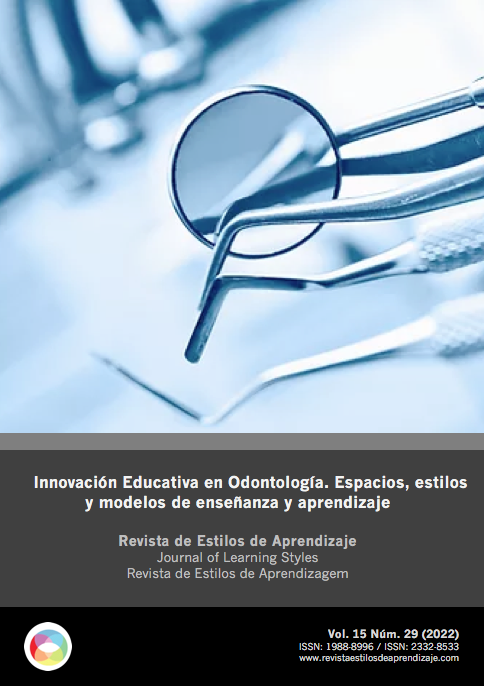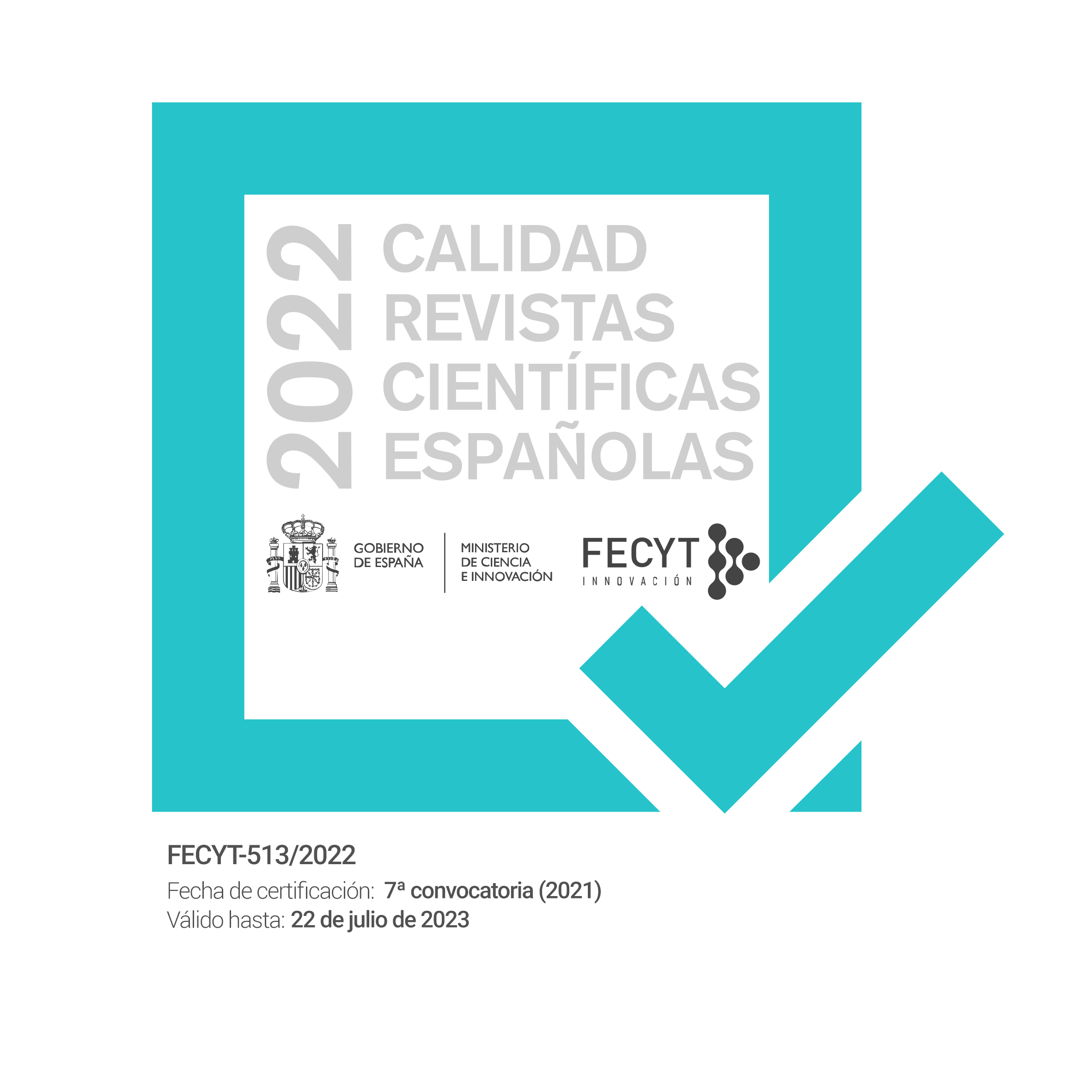Assessment of the evaluation platform “Uevalua”, by the 5th year students of the dental degree at the European University of Madrid
DOI:
https://doi.org/10.55777/rea.v15i29.4231Keywords:
evaluation, rubrics, dentistry, clinic practiceAbstract
Since 2014, Uevalua digital platform has been used to rate the dental treatments performed on patients by students of the Degree in Dentistry. Currently, both students and teachers are fully familiar with it, but it has sought to analyze whether the objectives under which it was created have been achieved. To do this, a four-question online questionnaire was posed to fifth-year students to see their opinions about Uevalua. 132 students were part of the study, of which 52% answered that the numerical grade they receive after performing a treatment objectively reflects the quality of the work done; 44% considered the feedback that is established between teacher-student to be useful or very useful when evaluating a treatment in Uevalua; 54% considered that the sections that are evaluated in each section of each treatment are representative of the clinical protocols of the subject; 90% considered themselves satisfied or very satisfied with Uevalua evaluation platform.
Downloads
References
Barnés, J. C. (2005). Situación actual de la convergencia europea de los estudios de Ciencias de la Salud. Educación médica, 8 (1). https://scielo.isciii.es/scielo.php?script=sci_arttext&pid=S1575-18132005000400003
Biggs, J., y Biggs, J. B. (2004). Calidad del aprendizaje universitario (Vol. 7). Narcea ediciones. https://barajasvictor.files.wordpress.com/2014/05/libro-j-biggs.pdf
Bindayel, N. (2017). Reliability of rubrics in the assessment of orthodontic oral presentation. Saudi
Dental Journal, 29(4), 135-139. https://dx.doi.org/10.1016%2Fj.sdentj.2017.07.001
Brailovsky, C. A. (2001). Educación médica, evaluación de las competencias. Aportes para un cambio curricular en Argentina, 106-22. https://docplayer.es/39468376-Educacion-medica-evaluacion-de-las-competencias.html
Cockett, A y Jacksone, C. (2018). The use of assessment rubrics to enhance feedback in higher education: An integrative literature review.Nurse Education Today. https://doi.org/10.1016/j.nedt.2018.06.022
Gutierrez Cárdenas, L. (2017). La plataforma de evaluación de Prácticas Clínicas como herramienta innovadora. Aplicación en el Grado en Odontología de la Universidad Europea de Madrid. Universidad Europea de Madrid. http://hdl.handle.net/11268/6893
Martínez-Rojas, J. G. (2008). Las rúbricas en la evaluación escolar: su construcción y su uso. Avances en medición, 6(129), 38. https://www.academia.edu/12893957/Las_r%C3%BAbricas_en_la_evaluacion_escolar_su_construcci%C3%B3n_y_su_uso
Mertler, C. A. (2001). Designing scoring rubrics for your classroom. Practical Assessment, Research & Evaluation, 7(25), 1-10. https://scholarworks.umass.edu/cgi/viewcontent.cgi?article=1108&context=pare
Masmitjà, J. A., Irurita, A. A., Trenchs, M. A., Miró, M. B., Marín, A. C., Busquets, M. C., y Ruiz,L. M. (2013). Rúbricas para la evaluación de competencias. https://www.aehe.es/wp-content/uploads/2015/09/rubricas_evaluacion_competencias.pdf
Popham, W. J. (1997). What's wrong-and what's right-with rubrics. Educational leadership, 55, 72-75. https://www.ascd.org/el/articles/whats-wrong-and-whats-right-with-rubrics
Prieto, M. E. C., y Ballestero, J. I. G. (2011). Rúbricas para la orientación y la evaluación en entornos virtuales de aprendizaje. En Las TIC al servicio de la docencia del Derecho en el marco del EEES. 273-283. https://www.uoc.edu/pdf/symposia/dret_tic2011/pdf/4.carrizosa_prieto_esther_gallardo_ballestero_jose.pdf
Sánchez Sanhueza, G. A., y Cisterna Cabrera, F. (2014). La evaluación de los aprendizajes orientada al desarrollo de competencias en Odontología. Educación Médica Superior, 28(1), 104-114. http://scielo.sld.cu/scielo.php?script=sci_arttext&pid=S0864-21412014000100012
Sanz, M. Libro Blanco: Título de Grado en Odontología. Madrid: Agencia Nacional de Evaluación de la Calidad y Acreditación (ANECA). 2004. https://www.uv.es/graus/OPE/ANECA/llibres_blancs/libroblanco_odontologia_def.pdf
Tenkumo, T. et. al. (2018). Introduction of integrated dental training jaw models and rubric criterias. European Journal of Dental Education. 1-15. https://doi.org/10.1111/eje.12395
Torres, M. J. M., Lirio, J. M. R., Olmedo, E. E., Soriano, R. L., Ferrero, I. F., e Izquierdo, M. Á. F. (2011). Aplicación de las rúbricas de evaluación en la docencia on-line. Jac-11, Jornada sobre Aprendizaje Cooperativo SPIEU, USE-UJI.

Downloads
Published
How to Cite
Issue
Section
License
By submitting the original, the author(s) declare that they are aware of and accept, in full, the privacy policy as well as the copyright of the Learning Styles Magazine.
The Learning Styles Magazine offers free and open access to its content, completely free of charge, in order to bring scientific research to its readers and society in general. All digital contents are free and open access and are published under a Creative Commons license:

Rights are granted under the Creative Commons Reconocimiento-NoComercial-SinObraDerivada 4.0 Internacional (CC-BY-NC-ND 4.0)
The Learning Styles Magazine is an open access journal. Publication of articles or reviews in the Journal does not entitle you to any remuneration. For authors as well as readers, the journal is free Creative Commons Reconocimiento-NoComercial-SinObraDerivada 4.0 Internacional (CC-BY-NC-ND 4.0).
With this licence, the reproduction and dissemination of the contents of the magazine for educational, social and knowledge transmission purposes is permitted, without any profit motive in mind, provided that the source and authorship are not modified. The licence granted to Learning Styles Magazine allows the copying and distribution of the magazine's contents, as long as the authorship of the work is recognised, correctly specifying the author and the publishing entity. The work may not be used for commercial purposes, nor may it be altered, transformed or generated from this work.
The publication of articles or reviews in the Journal does not give the right to any remuneration.
The Learning Styles Journal invites the author/authors to increase the visibility and scope of their articles published by re-disseminating them in:
- Web spaces and personal networks, as well as in scientific meetings and forums
- Open institutional archives in Universities, educational repositories and Research Centres.
- Academic and scientific networks (Researchgate, Academia.edu, Plubons, etc.)
All these spaces and publications must include all the bibliographic data of the publication.
























